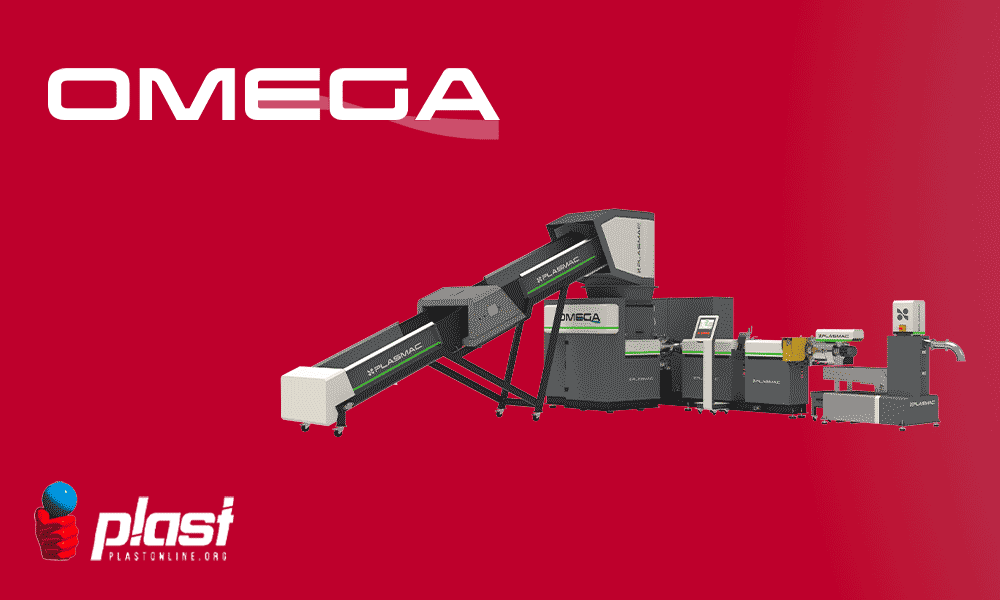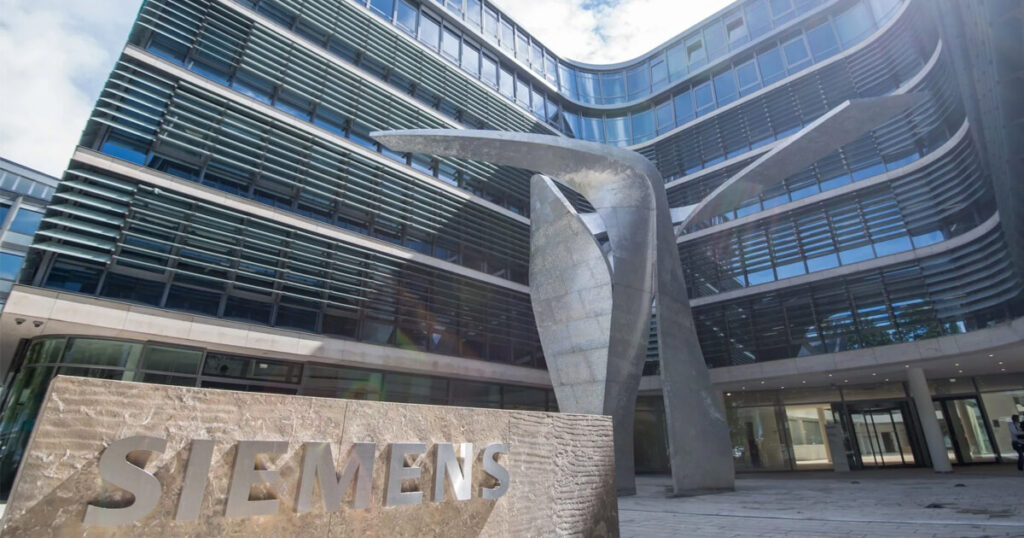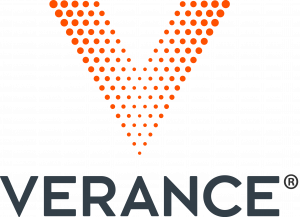Apple Presents Third Quarter Results

CUPERTINO, CALIFORNIA – Apple has unveiled its financial outcomes for the third quarter of fiscal 2023, concluding on July 1, 2023. In this period, the company recorded quarterly revenue of $81.8 billion, which represents a marginal 1 percent decline compared to the previous year. However, the earnings per diluted share for the quarter stood at $1.26, marking a notable 5 percent increase year over year. Tim Cook, the CEO of Apple, expressed satisfaction with the results, highlighting the achievement of an all-time revenue peak in the Services sector during the June quarter. This accomplishment was driven by the noteworthy milestone of over 1 billion paid subscriptions. Cook also pointed out the company’s positive performance in emerging markets, where the strong sales of iPhones played a significant role, his words were “We are pleased to announce an unprecedented revenue record in the Services division for the June quarter, propelled by a remarkable count of over 1 billion paid subscriptions. Additionally, the robust sales of iPhones have contributed to our continued success in emerging markets.”, emphasizing Apple’s commitment to advancing its core values across various areas, from education to environmental sustainability. He emphasized their dedication to innovation that enhances customer lives while also contributing positively to the world. Luca Maestri, the CFO of Apple, underscored the company’s performance, highlighting a positive trajectory in the year-over-year business performance when compared to the previous quarter. He also noted a significant achievement: the company’s active device user base reached an all-time high across all geographic segments, and stated “Our performance for the June quarter displayed improvement in our year-over-year business performance, building on our results from the preceding March quarter. Additionally, our active device user base has reached a pinnacle across all global segments.” During this quarter, Apple exhibited robust financial management, generating a substantial operating cash flow amounting to $26 billion. The company also demonstrated its commitment to its shareholders by returning over $24 billion to them. Moreover, Apple continued to allocate resources toward its long-term growth strategies. Expanding on this, Maestri provided further details, stating, “Throughout this quarter, we have achieved a robust operating cash flow, amounting to a substantial $26 billion. Our unwavering dedication to our shareholders is clearly demonstrated through our allocation of over $24 billion to them. Concurrently, our resolute commitment to long-term growth is evident in our ongoing investments.” Demonstrating their commitment to shareholders, Apple’s board of directors has officially announced a cash dividend of $0.24 per share for the company’s common stock. This dividend distribution is slated for August 17, 2023, and will encompass shareholders who are registered as of the close of business on August 14, 2023. In addition, Apple has revealed its plans to facilitate the live streaming of its Q3 2023 financial results conference call, which is set to kick off at 2:00 p.m. PT on August 3, 2023. Interested parties can access the live webcast at apple.com/investor/earnings-call. After the event concludes, the webcast will be available for replay for an estimated duration of approximately two weeks.
Empowering Safety: AI-Backed Mammogram Screening Proven Secure

The integration of artificial intelligence (AI) into mammography screening offers a secure alternative to the traditional approach of radiologists conducting double readings. Furthermore, it has the potential to alleviate the significant burden on medical professionals. These findings were unveiled through a preliminary examination of a prospective, randomized controlled study. This investigation focused on the safety aspect of AI implementation in mammography screening and was overseen by a team of experts from Lund University in Sweden. The comprehensive results of this trial are now available in The Lancet Oncology, marking a substantial advancement in the field. Annually, nearly one million women in Sweden undergo mammography screening, where each examination is reviewed by two breast radiologists in a double reading process to enhance sensitivity. However, a global shortage of breast radiologists poses a risk to this screening service. Recently, the potential of AI to assist in mammography screening has garnered attention, though its optimal application and clinical impact remain uncertain. To comprehensively understand the implications of AI-assisted radiology, randomized studies are imperative, assigning women to either AI-supported screening or standard screening. The Mammography Screening with Artificial Intelligence (MASAI) trial is the pioneering randomized controlled study investigating the effects of AI-supported screening. In this trial, AI was employed to identify high-risk breast cancer screenings for double reading by radiologists. Lower-risk screenings were examined by a single radiologist, with AI highlighting suspicious findings. The trial involved 80,033 women, randomly assigned to either AI-supported screening (40,003) or standard double reading (40,030). The results indicated that AI increased cancer detection by 20% (41 cases) compared to standard screening, without raising false positive rates. Furthermore, radiologists’ workload was reduced by 44%, with 46,345 AI-supported screenings compared to 83,231 standard screenings. Of note is the time efficiency, as the study estimated a five-month reduction in radiologists’ time required to review the 40,000 screenings within the AI group. The study’s context was a single-site Swedish setting, necessitating the validation of these findings under diverse conditions and algorithms. The next phase involves analyzing the types of cancers detected with and without AI support. The trial’s primary objective is assessing the interval-cancer rate, referring to cancers diagnosed between screenings that typically have poorer prognoses than screen-detected cancers. This assessment will occur following a two-year follow-up for the 100,000 trial participants. The complexity of screening demands careful consideration of benefits and harms. While higher cancer detection rates do not necessarily equate to a superior method, AI-supported screening appears secure, maintaining cancer detection rates despite a reduced workload. The analysis of interval cancers will unveil whether AI-supported screening enhances accuracy and effectiveness, achieving a balance between overdiagnosis and timely cancer detection. Find the complete article following the link to The Lancet Oncology.
Innovation: Mexedia Net+, in agriculture, can mitigate risks associated with climate change.

Roma, 14th October – The innovation can assist the world of agriculture in managing and preventing risks linked to climate change, drought, and heavy precipitation,” states Stefano Zangrilli, Managing Director of Mexedia Net+. Mexedia Net+ is a company within the Mexedia group dedicated to providing the best connectivity solutions, both on public and private networks, for digital transformation. The Italian tech company develops innovative solutions and advanced tools within an integrated technological ecosystem. This ecosystem enables companies to manage all customer communication activities. “The predictive aspect and resource optimization,” Zangrilli notes, “can make a difference for precision agriculture. This is why it would make more sense to invest in change rather than being compelled to invest in recovery and reconstruction. Mexedia Net+ offers a service in this direction, serving as a reference point for those aiming for a modern agricultural model.” “Italy has always been,” Zangrilli continues, “a country with a strong agricultural vocation. Exceptional products are cultivated on its territory, many of which are destined for export, across over a million enterprises of all sizes, providing employment to hundreds of thousands of people. Despite the considerable size of the sector, investments aimed at modernizing the agricultural industry are not as extensive as one would expect, or at least, where investments exist, they lack long-term scope.” “What is lacking,” he comments, “is a genuine strategic modernization plan, supported in its execution phase by the right tools to realize it. This plan now inevitably relies on what technological innovation makes available.” “Cultural resistance,” he warns, “a legacy of the past, and the traditional reluctance of one of the world’s oldest industries towards modernity, especially in our country, represent significant inhibiting factors. An analysis of the agricultural sector carried out by the Politecnico di Milano’s Observatory for 2022 reveals the sector’s technological lag: only 8% of Italian agricultural enterprises have embraced precision agriculture or agritech. Most enterprises, especially small ones, continue to rely on experience and tradition, despite ongoing climate changes that have already altered climate seasonality, giving rise to often unexpected and uncontrollable extreme events.” “In a scenario where the climate,” Stefano Zangrilli explains, “increasingly presents itself as a critical and uncertain factor, capable of nullifying in a matter of days – sometimes hours – the efforts and investments of months, the predictive capacity made possible by technology could represent significant added value, as well as the ability to optimize production cycles by more efficiently utilizing essential natural resources such as water, light, and soil.”
Plasmac Revolutionizes The Recycling Industry

Syncro Group is gearing up for PLAST, a highly significant trade fair for the plastics industry, scheduled to take place at Fiera Milano from September 5th to 8th. At Plast 2023, Syncro Group is set to showcase its latest PLANET-APPROVED products, which align with their ZERO WASTE MISSION. These products are designed to minimize industrial waste, energy consumption, and raw material usage, all while maintaining comprehensive control over overall output. Among the highlights, PLASMAC, a leading player in in-line and out-line grinding and granulating systems for post-industrial waste, will be a prominent presence. The spotlight will be on mini ALPHA XS and OMEGA systems, both operational during the event. Addressing the escalating costs of energy and raw materials, as well as the growing need for in-house recycling of post-production scrap, PLASMAC has developed the OMEGA series. With a capacity range from 120 to 250 kg/h, this solution caters to producers of various materials such as PE, PP, PC, PMMA, ABS, TPU, and TPE. It eliminates the need for prior size reduction and takes into account the hardness of generated waste. The revolutionary OMEGA recycling extruder system, a PLASMAC creation, introduces a transformative approach to recycling. Integrating a compact shredder with Short Screw Technology (SST), this innovative system employs a dual-diameter ratio screw to efficiently process waste and produce top-notch recycled pellets. The operation is straightforward but impactful: waste enters the slow-rotating shredder through an elevator, roll feed, or trim basket, allowing diverse forms of scrap material to be fed in a single step. The screen design minimizes heat and dust, yielding high-quality pellets with fewer imperfections. An added perk is the PLASMAC TYGER’S CAMERA, located within the hopper and connected to the user-friendly HMI system. It enables easy operational control, storing multiple receipts based on the plant’s materials portfolio. Energy efficiency stands as a defining feature of the OMEGA system, offering the highest output per kilowatt of installed power in the market. This translates to reduced running costs and a speedy return on investment, with potential paybacks in as little as six months. The technology eliminates the need for cooling water in the rotor or transfer system, reducing both maintenance and costs while improving profitability. In addition, the OMEGA system boasts a compact footprint, consuming minimal floor space and freeing up room for other applications. Complementing the core system, OMEGA offers a range of ancillaries to enhance its performance. These include air or water-cooled palletizers, trim baskets for inline trims, reel feeds for off-spec or scrap reels, elevators, metal detectors for various scrap types, screen changers for offline products, vacuum degassing stations for printed or hydroscopic materials, pellet detection system to identify issues in the pelletizer. Notably, PLASMAC has introduced a gravimetric system for real-time output calculation, enabling automatic adjustments to ensure optimal efficiency by aligning production with consumption. Each OMEGA unit features remote connection capability, adhering to Industry 4.0 standards and linking to PLASMAC HUB and TYGER CLOUD platforms. This groundbreaking innovation empowers users to remotely monitor and manage the production process, from purchasing spare parts to accessing remote assistance services. In summary, the OMEGA recycling shredder extruder system offers a comprehensive and efficient solution for transforming waste materials into high-quality pellets. Its distinctive features and accompanying systems make it a cost-effective and profitable choice for recycling industry businesses. Syncro Group unites a constellation of advantages and expertise from different specialists in the field, facilitated by the synergy between companies such as SYNCRO, PLASMAC, PLANTECH-CST, ACELABS, EUR.EX.MA., and SB DRY.
Shall We Soap The Plastic?

Virginia Tech researchers have devised a groundbreaking method to upcycle plastic waste into valuable surfactants, essential components in soap and detergent production. Their study, published in Science, highlights the unexpected molecular resemblance between polyethylene, a common plastic, and fatty acids used in soap manufacturing. This connection inspired Guoliang “Greg” Liu, an associate professor of chemistry, to explore the transformation of polyethylene into fatty acids, which could then be turned into soap. By subjecting polyethylene to temperature-gradient thermolysis, the team successfully broke down the plastic into shorter chains, laying the foundation for an innovative plastic-to-soap upcycling technique. Liu’s approach involves mimicking the combustion process of wood to break down polyethylene into “short-chain polyethylene” molecules, akin to waxes. These molecules, when combined with additional steps including saponification, yielded the world’s first soap made from plastics. The method’s simplicity and potential to work on various plastic types, including polypropylene, offer a new avenue for recycling. Unlike traditional methods, this approach doesn’t require complex catalysts or intricate procedures, making it more accessible for global adoption. The economic viability of the process is underscored by the fact that soaps, though seemingly ordinary, can be worth up to triple the value of plastics by weight. This innovation could ultimately pave the way for reduced plastic waste in landfills, as recycled plastics are transformed into valuable and sustainable soap products. The study not only presents a tangible solution to plastic pollution but also emphasizes the universality of the problem. With simple processes, like the one proposed by Liu and his team, accessible to many countries worldwide, the fight against plastic pollution takes on a global perspective. More information: Zhen Xu et al, Chemical upcycling of polyethylene, polypropylene, and mixtures to high-value surfactants, Science (2023). DOI: 10.1126/science.adh0993. www.science.org/doi/10.1126/science.adh0993
Hockey Canada Welcomes All

Hockey Canada Releases Statement on Path Forward for Equity, Diversity, and Inclusion, Along with Commitment to Action. CALGARY, AB— Hockey Canada has released its inaugural Path Forward for Equity, Diversity, and Inclusion (EDI), accompanied by a Commitment to Action statement that encapsulates the organization’s ongoing endeavors to enact lasting and transformative change within Canada’s hockey ecosystem. The EDI Path Forward underscores three pivotal areas adaptable to cater to distinct requirements at all levels and regions across Canada: individuals, the customer community, and the brand. Alongside the Commitment to Action statement, the document encompasses the guiding inquiries that steered this significant undertaking, a set of 13 objectives slated for accomplishment over the next two years, and the Hockey Canada manifesto. Denise Pattyn, Senior Vice President of People, Culture, and Inclusion at Hockey Canada, remarked, “This Path Forward reinforces our dedication to advancing diversity and inclusion across the organization and throughout the members nationwide. It is indispensable to cultivating an all-encompassing environment, fostering growth and retention within the sport throughout the country, and leveraging our platform for societal impact.” She continued, “We firmly believe that nurturing a diverse and inclusive culture is an ongoing journey, and I am utterly confident that leadership across the nation will effectively guide us toward the necessary trajectory for this crucial collaborative effort.” Spanning the three core domains, the document outlines 45 actions accompanied by corresponding gauges and timelines that will collectively fortify hockey, ensuring its heightened accessibility and Hockey Canada’s fulfillment of its mission to lead, foster, and champion positive hockey experiences for all who consider Canada their home. “Through input and insight from Hockey Canada’s EDI Advisory Group, a collection of Hockey Canada staff members and external subject matter experts, this document outlines Hockey Canada’s Path Forward in ensuring our game is diverse, welcoming, and inclusive for all,” said Irfan Chaudhry, vice-president of diversity and inclusion for Hockey Canada. “By focusing on these efforts, Hockey Canada will be able to support inclusive practices, attract and retain a diverse workforce, invest to combat all forms of discrimination, and engage with our diverse communities across the country to help Make Hockey More.” The entire Equity, Diversity and Inclusion Path Forward can be downloaded here. For more information on Hockey Canada, please visit HockeyCanada.ca, or follow along through social media on Facebook, X, and Instagram.
Unveiling the Future of Marketing: A Revolutionary AI-Enhanced Book by Antonio Pagano and Claudio GPT

In the ever-evolving realm of marketing, change isn’t just a constant; it’s a dynamic force that shapes the way we engage with the world. As we stand on the cusp of yet another transformative shift, a beacon of innovation emerges, capturing the attention of the industry and igniting anticipation, curiosity, and fervent interest. Enter “The One-Person Marketing Machine: How AI is Transforming Marketing, You and the Entire World,” a trailblazing work authored by Antonio Pagano and Claudio GPT. Set to be published by the pioneering 1886 Publishing, this book heralds a new era in marketing strategy. It’s not just a glimpse into the future; it’s a revelation of a partnership that harmonizes human ingenuity with artificial intelligence prowess. In a landscape where marketing methodologies that worked just months ago can appear outdated, the anticipation surrounding this impending release is palpable. The book’s central theme revolves around the seismic shift that AI has brought to marketing. It delves into how AI, once the realm of science fiction, is now poised to revolutionize how we conceive, execute, and excel in marketing endeavors. What sets this book apart isn’t solely its forward-looking perspective, but also its semi-serious narrative approach. Antonio Pagano, a visionary marketer with over two decades of experience, and Claudio GPT, the prodigious creation of Anthropic, converge to weave a story that showcases the synergistic potential of human-AI collaboration. Their partnership isn’t merely theoretical; it’s a testament to AI’s capabilities in crafting engaging content, deciphering customer data, and automating tasks that have historically burdened marketing teams. The true curiosity is ignited by the real-world relevance this book promises. Through real case studies and simulations, readers get a tantalizing preview of the potential that awaits those willing to embrace AI-powered strategies. From crafting captivating social media posts to optimizing campaigns through data analysis, the horizons seem boundless. Furthermore, the anticipation surrounding the book mirrors the very essence of its content—a fusion of human and AI capabilities to achieve what was once deemed improbable. 1886 Publishing’s decision to spearhead the release amplifies the excitement, as the industry eagerly awaits the insights that could reshape their marketing approaches. As the publication date draws near, marketers, entrepreneurs, and industry enthusiasts find themselves at a crossroads in the marketing landscape. The book’s impending release has raised awareness of the need to adapt, learn, and harness the potential AI offers. In an era where competition is fierce and staying ahead of the curve is paramount, “The One-Person Marketing Machine” doesn’t just provide a glimpse—it offers a roadmap to thrive. In the end, this forthcoming release isn’t solely about a book; it’s about the transformation it promises, the ideas it sparks, and the discourse it will inevitably initiate. So, mark your calendars and prepare to embrace a new chapter in marketing history as Antonio Pagano and Claudio GPT guide us toward a future where the inconceivable becomes achievable, and where collaboration between humans and AI holds the key to conquering the marketing landscape of tomorrow.
Oracle Cloud Infrastructure Receives Authorization for Hosting Sensitive Intelligence Missions

Oracle expands support for the U.S. Intelligence Community and Department of Defense Oracle has announced that the U.S. Intelligence Community has granted authorization to Oracle Cloud Infrastructure (OCI) for hosting Top Secret/Sensitive Compartmented Information (TS/SCI) missions. OCI’s Oracle National Security Regions (ONSRs), equipped with redundant and dispersed data centers, have been fortified to meet the highest classification levels mandated by the U.S. government for Top Secret/SCI tasks. These regions are overseen by U.S. citizens cleared by the government and connected solely to classified U.S. government networks. Cloud Network Operations Centers (CNOCs), managed securely, facilitate operations with the involvement of U.S. Government-cleared engineers. This new certification offers the Department of Defense (DoD) and Intelligence Community the ability to utilize Oracle Cloud innovations. Furthermore, Oracle’s enterprise accreditations have been expanded to accommodate unclassified, controlled unclassified information (CUI), and top-secret workloads. Oracle also provides customers access to dedicated cloud regions that have received authorization at FedRAMP High/DISA IL2-4, DISA IL 5, and FedRAMP+ levels. The TS/SCI authorization moves the Intelligence Community and the DoD closer to their vision of multi-cloud utilization, fostering the adoption of commercial innovations for sensitive operations. Oracle’s advanced cloud technology assures consistent high performance and resilience, catering to data-focused and performance-intensive national security systems. These systems are upheld by a cybersecurity infrastructure that adheres to Zero Trust principles. The new authorization enables the Intelligence Community to access over 50 Oracle Cloud services through Top Secret networks, with additional services anticipated to be made available through a continuous accreditation process. These services encompass not only core networking, computing, and storage offerings but also a diverse range of integrated and modern cloud-native services designed to enhance mission success. These capabilities include the Oracle Modern Data Platform incorporating Oracle Autonomous Database and Exadata Cloud Service, cloud-native VMware services utilizing vSphere console and APIs instead of VMC, Oracle Fast Connect for establishing direct network connections, Advanced Analytics, and HPC and GPU accelerated infrastructure. Kim Lynch, Executive Vice President of Government Defense and Intelligence at Oracle, stated, “As an established partner to the IC and DoD, Oracle is proud to bring our next-generation cloud services to bear against their most important work. This latest authorization reinforces our commitment to accelerating our nation’s decision advantage to protect and advance our country.” Oracle maintains a longstanding strategic technology partnership with the U.S. Government. With a comprehensive array of modern data management services, Oracle Cloud adheres to open cloud and data standards and is underpinned by AI and machine learning-powered architecture. Oracle Cloud is leveraged by the U.S. Intelligence Community and the Department of Defense for secure data collection, processing, analysis, and distribution across their operations. Over 1,000 public sector organizations globally benefit from Oracle’s leading-edge technologies and exceptional performance.
Siemens to make solar energy equipment for US market in Wisconsin

Aug 15 (Reuters) – German conglomerate Siemens (SIEGn.DE) said on Tuesday it will start producing solar energy equipment in the United States in 2024 through a contract manufacturer in Wisconsin. The announcement marks a move by one of the world’s largest manufacturers to capitalize on incentives in President Joe Biden’s year-old landmark climate change law to boost American-made supplies of solar energy components and compete with China. Siemens will produce solar string inverters, devices that convert energy generated from solar panels into usable current, for the U.S. utility-scale market, it said in a statement. The products will be made at a facility in Kenosha, Wisconsin, operated by Sanmina (SANM.O). “Working with Sanmina to establish this new production line, Siemens is well positioned to address supply challenges our country is facing as we work to localize production for green and renewable infrastructure,” Brian Dula, vice president of electrification and automation at Siemens Smart Infrastructure USA, said in the statement. The work for Siemens will create up to a dozen jobs at the factory to start, the company said. Production will scale up to a capacity of 800 megawatts of inverters per year. The Inflation Reduction Act has unleashed $100 billion in investment in the domestic solar sector in the last year, including $20 billion for solar and storage manufacturing, the top U.S. solar trade group said this week. More than 50 solar manufacturing facilities have been announced or expanded since the IRA passed, according to the Solar Energy Industries Association study. That includes about 7 gigawatts of inverter capacity.
Verance Revolutionizes Generative AI Content Protection with Unparalleled Watermark Technology and Cloud Services

SAN DIEGO, CA, UNITED STATES, August 14, 2023/EINPresswire.com In a groundbreaking move poised to reshape the landscape of artificial intelligence and content creation, Verance, a seasoned veteran in the technology industry, announced its pivotal role in providing watermark technology and cloud services specifically designed to tackle the intricate challenges posed by generative AI systems. With an impressive thirty-year history in technology development and a robust intellectual property portfolio, Verance is well-equipped to address the copyright and authenticity issues plaguing the burgeoning field of AI-generated content. The cornerstone of Verance’s contribution is its watermark technology, a proven solution that has garnered global recognition and adoption over the past two decades. This technology has been seamlessly integrated into more than five hundred million consumer devices, rendering Verance uniquely positioned to support the Generative AI industry. Notably, Verance’s announcement aligns with recent calls from Congress and an important declaration made on July 21, 2023, by the Biden Administration. In response to these collective efforts, major players in the AI sector, including Amazon, Anthropic, Google, Inflection, Meta, Microsoft, and OpenAI, have willingly committed to incorporating watermarking into AI-generated content. This voluntary commitment is aimed at enhancing the security and integrity of AI technology by distinguishing between AI and non-AI content. Critical to the success of this endeavor is the requirement for watermarks inserted into Generative AI content to be imperceptible, robust, and secure. Verance’s watermark technology not only fulfills these criteria but also boasts a proven track record of identifying and safeguarding billions of dollars’ worth of content. This accomplishment is attributed to its cutting-edge psychoacoustic and psychovisual techniques, which effectively conceal data within content while withstanding challenges such as reprocessing, redistribution, and circumvention attacks. The application of Verance’s watermark technology extends beyond Hollywood, where it has been widely adopted for use in motion pictures. This innovative solution has also found its place in television standards across the United States, Europe, and forty other countries worldwide. Nil Shah, CEO of Verance, stated, “As the recognized leader in watermarking, Verance is uniquely positioned to accelerate AI watermark implementations with the top watermark IP portfolio in history and the largest installed base of devices detecting watermarks in the world. Our IP and best-in-class knowledge in this space is allowing us to utilize tailored watermark techniques that are applicable to multiple forms of AI-generated content including video, audio, speech, music, and text. Broadly accepted by the largest content companies in the world, we are experts at imperceptible watermarks having passed expert-level quality assessments and winning an Emmy award for our efforts.” Verance’s watermark technology is embodied in its global watermarking platform, Verance Aspect™. This platform facilitates dynamic features on broadcast television, enabling activities such as sports betting, interactive advertising, and engagement across various screens and distribution channels. Aspect is fully compatible with industry standards including ATSC 3.0 and HbbTV and is seamlessly integrated into the existing ATSC 1.0 broadcasting environment. Noteworthy television programmers across the United States, such as FOX, Graham, Gray, Sinclair, PBS affiliates, and Capitol Broadcasting, have successfully implemented Aspect. Verance’s innovation doesn’t stop at watermark technology; their content measurement and enhancement technologies have set industry benchmarks for television, movies, and music. With an impressive track record of adoption by over 100 leading technology and entertainment companies, and deployment in more than 500 million consumer products globally, Verance has truly established itself as a trailblazer in the realm of AI-generated content protection.
